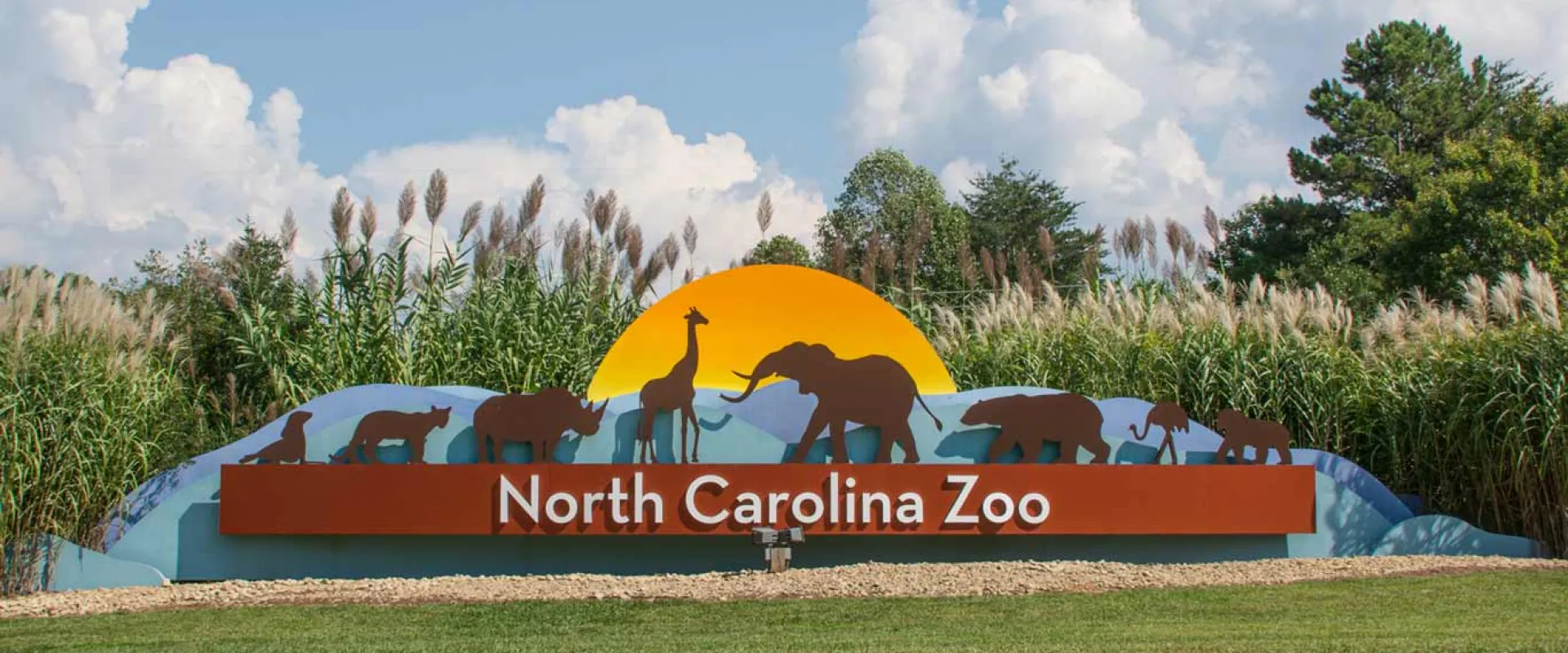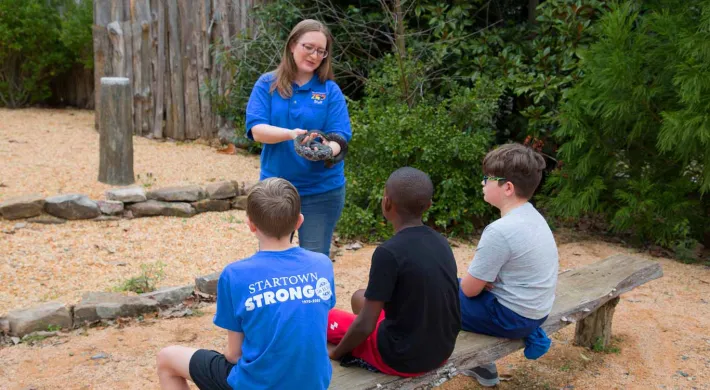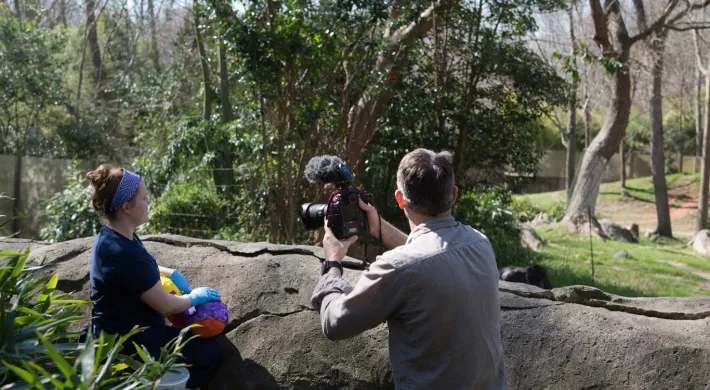Overview: At the North Carolina Zoo, we are committed to protecting wildlife and other natural resources. Through the Regional Conservation portion of our Living With Nature Live! events, our goal is to show middle and high school students the many ways we work to conserve. This year we are focusing wildlife survey techniques.
Activities offered for classrooms can be used by teachers as they apply to their class. Pre-activities and post-activities are meant to help support and enrich the learning that takes place during the Live Broadcast. All are optional but strongly encouraged in order to align with the standards provided.
Date of Event: Wednesday May 3, 2023 10:00 am (EST)
To Register: https://us02web.zoom.us/webinar/register/WN_jZKSwrSsSI26pblUhcVnnw
Designed For: Middle School and High Schools Students (see NC Standard Course of Study alignments below)
Objectives:
Teacher Information (All Grades):
Our North Carolina Conservation portion of our Live will be broadcast via Zoom on Wednesday, May 3, 2023 at 10 am. It will last approximately 30 minutes.
In order to set the foundation/stage for the Animal Behavior and Biology live/interactive event, students should have a basic understanding of habitats both as a zoo dwelling place and as a scientific term describing an area or type of area.
Determine your goals for your class. Use the objectives listed above to decide what you’ll focus on for the duration of the interaction. There are many opportunities to create a cross-curricular event and experience for students. Consider teaming up with another content-area teacher.
Suggested Activities
The following activities are offered as suggestions to engage students’ prior knowledge and prepare them for their virtual trip to the North Carolina Zoo to learn about North America Conservation. After their virtual trip, classes or groups will be encouraged to work on their own Regional Conservation project. See the Post-Event suggestions for details.
Prior to Event
- Read articles - Consider the influences humans have on animals and their natural habitats. Take notes on what surprises you, concerns you, etc.
https://nhpbs.org/natureworks/nwep16b.htm
http://www.anapsid.org/animalshumans.html - In your schoolyard find an animal and then make a complete list of all the behaviors you all see an animal doing in the school yard. For example, a squirrel, an ant, or a bird.
During Event
Coming closer to event
Post Event
- Have students map the space their pet, family, or classmates use and then complete another ethogram of their activities in that space.
- Compare ethograms between different species of animals. What similarities and differences do you all notice?
- Reflecting on the behaviors recorded of an animal in the school yard, create and defend an argument as to how you would design an exhibit or habitat for that particular animal.
For questions or further information email schoolprograms@nczoo.org.
6th Grade
Science
NCSOS
- 6.L.2.3 Summarize how the abiotic factors (such as temperature, water, sunlight, and soil quality) of biomes (freshwater, marine, forest, grasslands, desert, Tundra) affect the ability of organisms to grow, survive and/or create their own food through photosynthesis.
NGSS
- MS-LS2-1 Analyze and interpret data to provide evidence for the effects of resource availability on organisms and populations of organisms in an ecosystem.
- MS-LS2-4 Construct an argument supported by empirical evidence that changes to physical or biological components of an ecosystem affect populations.
- MS-LS2-5 Evaluate competing design solutions for maintaining biodiversity and ecosystem services.
- MS-ESS3-3 Apply scientific principles to design a method for monitoring and minimizing a human impact on the environment.
ELA
W.6.1. Write claims about topics or text. a. Write a claim about a topic or text. b. Write one or more reasons to support a claim about a topic or text
W.6.2 Write to share information supported by details. a. Introduce a topic and write to convey ideas and information about it including visual, tactual, or multimedia information as appropriate. b. Provide facts, details, or other information related to the topic.
W.6.5 Conduct short research projects to answer a question.
7th Grade
Science
NCSOS
- 7.L.2.3 Explain the impact of the environment and lifestyle choices on biological inheritance (to include common genetic diseases) and survival
NGSS
- MS-LS2-1 Analyze and interpret data to provide evidence for the effects of resource availability on organisms and populations of organisms in an ecosystem.
- MS-LS2-4 Construct an argument supported by empirical evidence that changes to physical or biological components of an ecosystem affect populations.
- MS-LS2-5 Evaluate competing design solutions for maintaining biodiversity and ecosystem services.
- MS-ESS3-3 Apply scientific principles to design a method for monitoring and minimizing a human impact on the environment.
ELA
W.7.1 Write claims about topics or texts. a. Introduce a topic or text and write one claim about it. b. Write one or more reasons to support a claim about a topic or text. c. Use temporal words (first, next, also) to create connections.
W.7.2 Write to share information supported by details. a. Introduce a topic and write to convey ideas and information about it including visual, tactual, or multimedia information as appropriate. b. Provide facts, details, or other information related to the topic. c. Select domain-specific vocabulary to use in writing about the topic.
W.7.5 Conduct research to answer a question based on multiple sources of information.
8th Grade
Science
NCSOS
- 8.L.1 Understand the hazards caused by agents of diseases that effect living organisms.
- 8.L.3 Understand how organisms interact with and respond to the biotic and abiotic components of their environment.
- 8.E.1 Understand the hydrosphere and the impact of humans on local systems and the effects of the hydrosphere on humans.
NGSS
- MS-LS2-1 Analyze and interpret data to provide evidence for the effects of resource availability on organisms and populations of organisms in an ecosystem.
- MS-LS2-4 Construct an argument supported by empirical evidence that changes to physical or biological components of an ecosystem affect populations.
- MS-LS2-5 Evaluate competing design solutions for maintaining biodiversity and ecosystem services.
- MS-ESS3-3 Apply scientific principles to design a method for monitoring and minimizing a human impact on the environment.
ELA
W.8.1 Write claims about topics or texts. a. State the claim and provide reasons or pieces of evidence to support it. b. Write reasons to support a claim about a topic or text. c. Use temporal words (first, next, also) to create connections.
W.8.2 Write to share information supported by details. a. Introduce a topic clearly and write to convey ideas and information about it including visual, tactual, or multimedia information as appropriate. b. Write one or more facts or details related to the topic. c. Write complete thoughts as appropriate. d. Use domain specific vocabulary related to the topic. e. Provide a closing.
W.8.5 Conduct short research projects to answer and pose questions based on multiple sources of information.
Earth/Environmental Science (High School)
- EEn 2.1.3 – Explain how natural actions, such as weather, erosion, and soil formation will affect Earth’s surface.
- EEn.2.4.2 Evaluate human influences on water quality in North Carolina’s river basins, wetlands and tidal environments.
Biology (High School)
NCSOS (Biology)
- Bio.2.1 Analyze the interdependence of living organisms within their environments
- Bio.2.2 Understand the impact of human activities on the environment (one generation affects the next).
NGSS
- HS-LS2-7 Design, evaluate, and refine a solution for reducing the impacts of human activities on the environment and biodiversity.
- HS-LS4-6 Create or revise a simulation to test a solution to mitigate adverse impacts of human activity on biodiversity.
- HS-ESS3-4 Evaluate or refine a technological solution that reduces impacts of human activities on natural systems.
ELA (High School)
9-10
W.9-10.1 Write claims about topics or texts. a. Introduce a topic or text and write one claim and one counterclaim about it
W.9-10.2 Write to share information supported by details. a. Introduce a topic clearly and use a clear organization to write about it including visual, tactual, or multimedia information as appropriate. b. Develop the topic with facts or details. c. Use complete, simple sentences as appropriate. d. Use domain specific vocabulary when writing claims related to a topic of study or text. e. Providing a closing or concluding statement.
W.9-10.5 Conduct research projects to answer questions posed by self and others using multiple sources of information.
11-12
W.11-12.1 Write arguments to support claims. a. Write an argument to support a claim that results from studying a topic or reading a text. b. Support claims with reasons and evidence drawn from text. c. Provide a closing or concluding statement.
W.11-12.2 Write to share information supported by details. a. Introduce a topic clearly and write an informative or explanatory text that conveys ideas, concepts, and information including visual, tactual, or multimedia information as appropriate. b. Develop the topic with relevant facts, details, or quotes. c. Use complete, simple sentences, as well as compound and other complex sentences as appropriate. d. Use domain specific vocabulary when writing claims related to a topic of study or text. e. Provide a closing or concluding statement.
W.11-12.5 Conduct research projects to answer questions posed by self and others using multiple sources of information.


